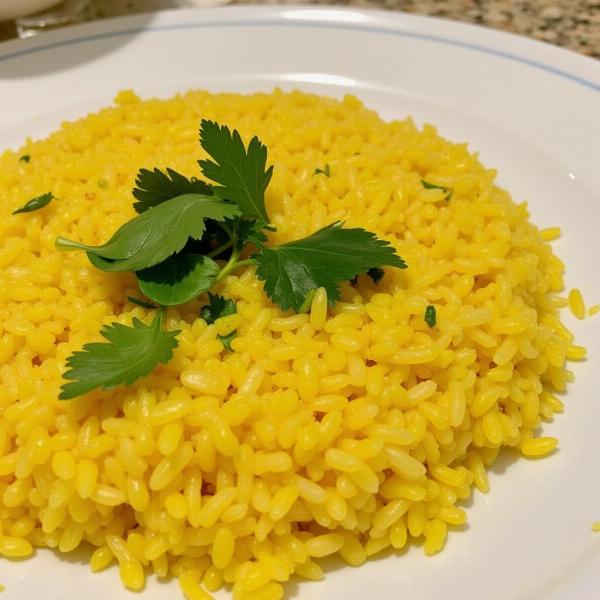Sooji, a staple in Indian kitchens, is known by various names across different regions. Understanding the “sooji meaning in Hindi” opens up a world of culinary possibilities and cultural insights. This article delves into the various aspects of sooji, from its linguistic roots to its culinary uses and cultural significance.
What Does Sooji Mean in Hindi?
Sooji, in Hindi, is commonly referred to as “सूजी.” It’s derived from the Sanskrit word “sukti,” meaning “fine flour.” This fine, granular flour is a versatile ingredient used in a wide range of sweet and savory dishes across India. From the popular upma in South India to the delectable halwa in the North, sooji plays a crucial role in the Indian culinary landscape. Understanding its different names and uses helps appreciate its significance in Indian cuisine.
Regional Variations of Sooji in India
While “sooji” is widely understood, it has regional variations. In some parts of North India, it’s also known as “rawa.” This difference in nomenclature reflects the diverse linguistic landscape of India. Interestingly, these variations often point to specific culinary uses. For instance, “rawa” is often associated with dishes like upma and sheera. Knowing these regional nuances enhances our understanding of Indian food culture.
Culinary Uses of Sooji
The versatility of sooji makes it a star ingredient in numerous dishes. It’s a popular choice for breakfast dishes like upma and porridge, offering a quick and nutritious start to the day. In desserts, sooji is used to make halwa, ladoo, and other sweet treats. Its fine texture lends itself well to creating smooth and creamy desserts. Beyond these, sooji also finds its way into savory dishes, adding a unique texture and flavor.
Nutritional Benefits of Sooji
Sooji isn’t just a versatile ingredient; it also packs a nutritional punch. It’s a good source of carbohydrates, providing energy for daily activities. It also contains essential nutrients like iron and fiber, contributing to a balanced diet. Including sooji in your meals can be a healthy and delicious way to boost your nutrient intake. For instance, a bowl of upma can be a filling and nutritious breakfast option.
Sooji in Indian Culture and Traditions
Sooji holds a special place in Indian culture and traditions. It’s often used in religious ceremonies and festive occasions. For example, sooji halwa is a common offering during pujas. Its presence in these rituals signifies its importance in Indian culture, going beyond just culinary applications.
 Sooji Upma
Sooji Upma
Sooji vs. Rava: Is There a Difference?
While often used interchangeably, “sooji” and “rava” can sometimes refer to slightly different textures of semolina. Generally, “sooji” denotes finer semolina, while “rava” can be slightly coarser. However, the distinction can be subtle, and both terms are widely used to describe this versatile ingredient. Understanding this nuance can be helpful when following specific recipes.
Conclusion: Embracing the Versatility of Sooji
From breakfast staples to festive desserts, sooji’s versatility makes it a beloved ingredient in Indian kitchens. Understanding its various names, culinary applications, and cultural significance deepens our appreciation for this humble yet essential grain. So, the next time you encounter sooji in a recipe or on your plate, you’ll have a richer understanding of its significance in the Indian culinary landscape.
FAQs:
- What is the difference between sooji and maida? Sooji is made from durum wheat, while maida is refined wheat flour.
- Can sooji be used in gluten-free recipes? No, sooji contains gluten and is not suitable for gluten-free diets.
- Is sooji good for weight loss? Sooji can be part of a balanced diet for weight management, but portion control is essential.
- How to store sooji? Store sooji in an airtight container in a cool, dry place to maintain its freshness.
- What is the shelf life of sooji? Sooji typically has a shelf life of several months when stored properly.
- Can I use sooji to make dosa? While not traditional, sooji can be mixed with other flours to make variations of dosa.
- Is sooji easy to digest? Sooji is generally easy to digest, making it suitable for people of all ages.
Related Articles:
Meaning-Hindi.in is your premier destination for high-quality Hindi translation services. We specialize in various domains, from business and legal documents to technical manuals and website localization. Our team of expert linguists ensures accurate and culturally sensitive translations, catering to diverse client needs. Need quick, reliable, and specialized translation services? Contact Meaning-Hindi.in today! Email: [email protected], Phone: +91 11-4502-7584.